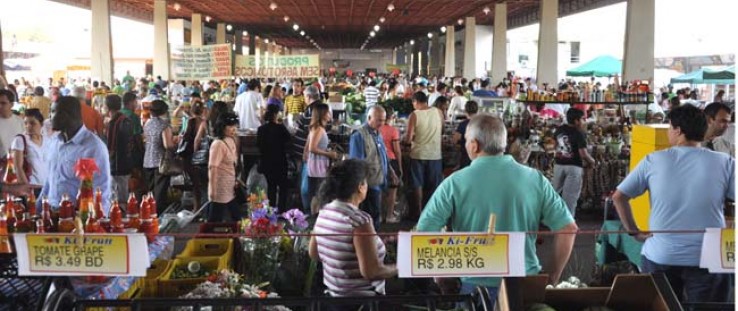 Brasília’s food distribution center: Embrapa improved the production and the distribution of food in Brazil.
Isadora Ferreira, USAID
Brasília’s food distribution center: Embrapa improved the production and the distribution of food in Brazil.
Isadora Ferreira, USAID
 Brasília’s food distribution center: Embrapa improved the production and the distribution of food in Brazil.
Isadora Ferreira, USAID
Brasília’s food distribution center: Embrapa improved the production and the distribution of food in Brazil.
Isadora Ferreira, USAID
Considered one of the fastest growing economies in the western hemisphere, Brazil is currently the third largest agricultural producer in the world. The country produces about 150 million tons of grains and oilseeds annually. Thirteen million tons of meat are sold, and national production records are outdone year after year.
Brazilian agriculture has not always been such a booming industry. In the 1970s, education, health, and food security were major challenges despite strong economic growth. Rapid population growth increased the demand for food, creating a gap between what was needed and what was produced. In 1972, the Brazilian Agricultural Research Corporation, better known as Embrapa, was created to overcome the food supply crisis. The goal was to develop agriculture in the country through the generation and transfer of knowledge from scientists to farmers.
The U.S. Government had been working in partnership with the Brazilian Government, through USAID, since 1961 to promote Brazil’s development in areas such as education, health, agriculture, sanitation—and to improve public administration.
As part of its overall strategy in the country, the Agency invested in Embrapa in its first years of operation. USAID’s perception at the time was that it was worth investing in an activity that might produce slow results, but have a lasting impact.
Eliseu Alves was the second president of the institution between 1979 and 1985. Still working at Embrapa, he serves as the entity’s living memory and talks about the priorities during the first years. “USAID played a key role in modernizing agriculture in Brazil by supporting Embrapa during a critical period in the first years of operation. This support was aimed at two areas: the training of human resources and the formation of the institution’s physical capital, including laboratories and research centers,” he explains.
In addition to direct support for professionals who made up Embrapa’s technical staff, USAID supported two public universities in Piracicaba and Viçosa, helping to strengthen their agricultural science courses. Four decades later, both schools are now agricultural knowledge centers in Brazil and worldwide.
In the 1960s and 1970s, USAID also promoted the exchange of Brazilian and American scientists to bring the most advanced techniques of cultivation to Brazil. The investment has paid off.
Though it started with about 950 people on its payroll, currently, Embrapa has over 9,000 employees, of whom 2,215 are researchers. Of these, 18 percent have master’s degrees, 74 percent have doctorates, and 7 percent have post-doctorate degrees. In 1972, 93 employees had master’s and doctorate degrees.
Embrapa currently conducts research and provides technical knowledge to farmers in 45 research units throughout the country. Agricultural producers growing coffee, cotton, beans, soybeans, cattle, and corn have massively benefited from this research. Since 2000, every dollar invested in Embrapa has translated into $10 in agricultural output.
Major Exporter
As a result of Embrapa research, Brazil is today a major food exporter. From 1975 to 2009, the supply of beef and pork multiplied four times. In the same period, milk production rose from 2.1 billion gallons per year to 7.03 billion gallons, and the production of vegetables rose from 9 million tons to 19.3 million tons per year. All this was achieved without any large increase in the cultivated areas. In 1980, the cultivation of grains and oilseeds in Brazil occupied 40 million hectares and produced 50 million tons per year. Today, Brazil produces 160 million tons on 50 million hectares.
This productivity gain is directly related to the new techniques introduced in Brazil through Embrapa and the agriculture schools.
“The steady and strategic investments made in Embrapa increased agricultural production, which not only advanced food security, but also improved Brazil’s balance of payments. We used to import food, and now we are one of the world’s largest exporters,” explains agronomist Fabiano Toni, professor at the Center for Sustainable Development of the University of Brasilia. “The fact that we did it without expanding the cultivated area shows the importance of agriculture intensification to reduce pressure on Brazil’s natural resources,” he says.
Today, Embrapa has bilateral agreements with 56 countries and 89 foreign institutions. Their methodologies are being shared with countries facing similar food-security and nutrition challenges.
For example, since January of this year, Embrapa has partnered with the University of Florida and Michigan State University—with support from USAID and the Brazilian Cooperation Agency—to promote food security and nutrition in Mozambique by strengthening policies for small-scale agriculture and school meals.
Alves thinks the same strategies that pulled Brazil out of its food crisis will work well in Mozambique. “The general principles that helped Brazilian agriculture are the same worldwide and will certainly help Africa. Our experience can be very useful in Mozambique because the challenges there are the same we faced— a lack of technical knowledge, well-trained human resources, and institutional capacity,” he explains.
In a sense, the Brazilian model of success is one that the U.S. Government is trying to emulate in several other developing countries through the Obama administration’s Feed the Future initiative.
“To achieve large-scale country transformation, it is essential to have strong government commitment to agriculture development, robust private sector participation, and coordination of various actors and efforts,” says Paul Weisenfeld, who heads up USAID’s Bureau for Food Security, which leads Feed the Future. “With good governance and development investments, sustainable outcomes can be achieved. Working in a select group of focus countries with a strong potential for agriculture-led growth, Feed the Future hopes to see some of the same successes achieved in Brazil.”
Back in the 1960s, Brazil was one of the largest recipients of development assistance provided by USAID. Fifty years later, Brazil is partnering with USAID to provide assistance to other countries in the developing world. Four decades ago, Brazil had a $45 billion gross domestic product (GDP). Brazil now has a $2,087 billion GDP, and in just three years, will join the ranks of wealthy countries that have played host to soccer’s biggest attraction: the World Cup. The event will be a warm-up of sorts for the Olympic Games to take place there two years later.
Brazil’s experience is not just a success story—it’s a global model for securing a country’s future. And for Brazil, it’s looking brighter every year.
This article originally appeared in November 2011







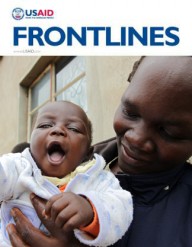

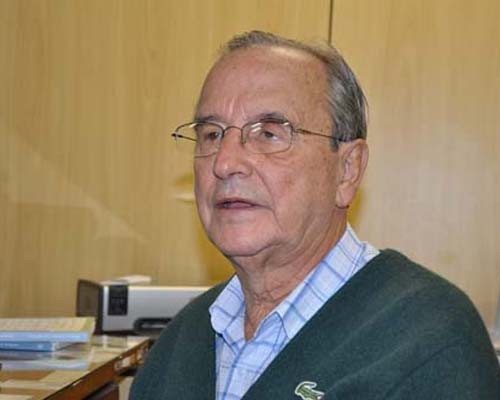
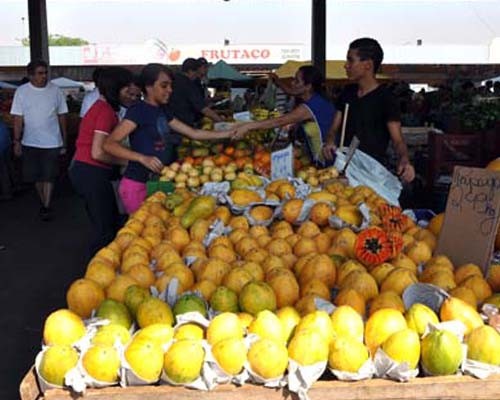
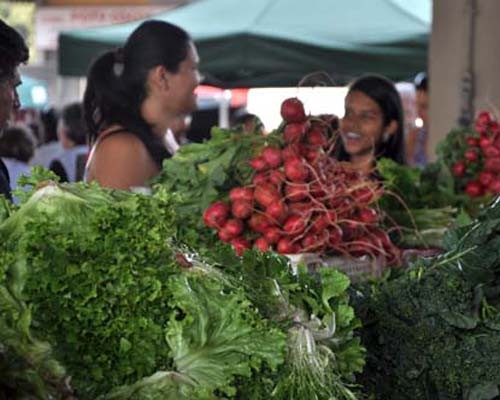

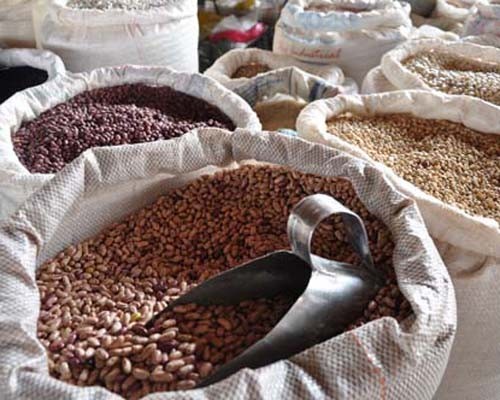
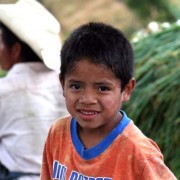
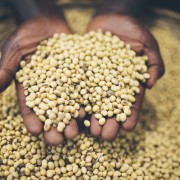
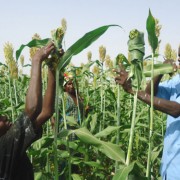
Comment
Make a general inquiry or suggest an improvement.